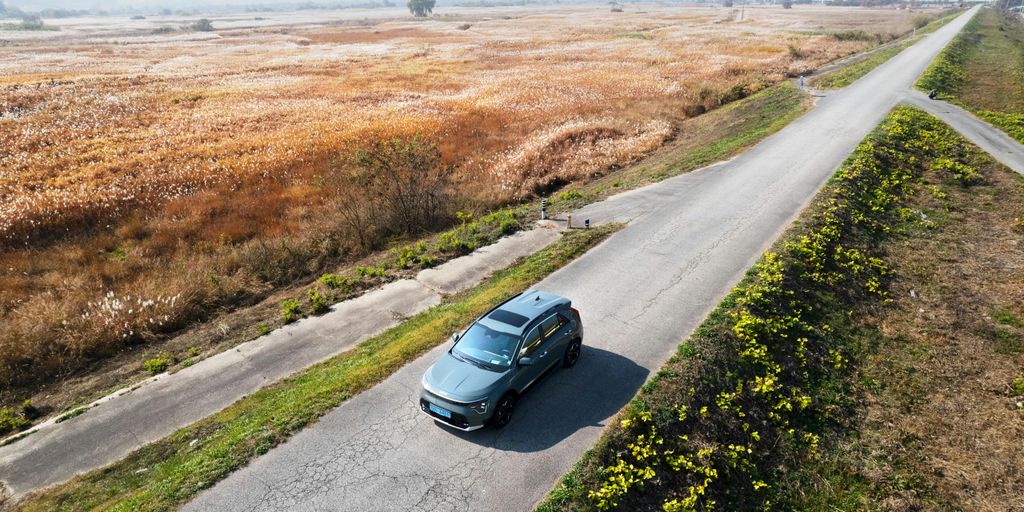Alternative Energy
Autonomous Driving Safety Features to Know About

As technology advances, autonomous vehicles are becoming a reality on our roads. These self-driving cars come equipped with a variety of safety features designed to protect passengers and pedestrians alike. Understanding these features is essential for anyone interested in the future of driving. This article explores the key safety elements of autonomous driving, ensuring a better grasp of how they work and their significance in reducing accidents.
Key Takeaways
- Automated emergency braking systems can help prevent collisions with pedestrians and cyclists.
- Blind spot monitoring enhances safety by alerting drivers to hidden vehicles.
- Night vision technology allows cars to detect obstacles in low-light conditions, improving night-time safety.
- Lane-keeping assist helps keep vehicles in their lanes, reducing the chance of accidents.
- Adaptive cruise control maintains a safe distance from other cars, making driving more comfortable and secure.
Automated Emergency Braking Systems

Automated Emergency Braking (AEB) is a crucial safety feature in modern vehicles. This system automatically detects potential collisions and applies the brakes to prevent or lessen the impact. AEB is designed to help drivers avoid accidents, especially in busy areas where sudden stops are common.
Detection of Pedestrians and Cyclists
- AEB systems can identify pedestrians and cyclists in the vehicle’s path.
- They use sensors and cameras to monitor the surroundings.
- This feature is particularly useful in urban environments where foot and bike traffic is high.
Urban Area Collision Reduction
- AEB significantly reduces the risk of collisions in crowded areas.
- It can react faster than a human driver, making it effective in emergencies.
- Studies show that AEB can lower rear-end crashes by up to 39%.
Integration with Other Safety Features
- AEB works alongside other systems like lane-keeping assist and blind spot monitoring.
- This integration enhances overall vehicle safety.
- Together, these features create a safer driving experience for everyone on the road.
Automated Emergency Braking is not just a convenience; it’s a life-saving technology that can prevent serious accidents and injuries.
| Feature | Benefit |
|---|---|
| Automatic Detection | Identifies potential hazards quickly |
| Emergency Braking | Applies brakes to avoid collisions |
| Integration with ADAS | Works with other safety systems for better protection |
Blind Spot Monitoring
Blind spot monitoring is a crucial safety feature that helps drivers stay aware of their surroundings while driving. This system uses sensors to detect vehicles that may be in the driver’s blind spots, providing alerts to prevent accidents.
Sensor Technology
- How it works: Sensors are placed on the sides of the vehicle to monitor areas that are not visible in the mirrors.
- Detection range: Most systems can detect vehicles up to 10-15 metres away.
- Types of sensors: Common types include radar and camera-based systems.
Driver Alerts
- Visual alerts: A light on the side mirror indicates when a vehicle is in the blind spot.
- Audible alerts: Some systems provide a sound warning if the driver signals a lane change while a vehicle is detected.
- Vibration alerts: Advanced systems may vibrate the steering wheel to grab the driver’s attention.
Integration with Autonomous Systems
- Enhanced safety: Blind spot monitoring can work alongside other safety features like lane-keeping assist.
- Self-driving cars: In autonomous vehicles, this system helps the car make safer decisions by detecting nearby traffic.
- Future developments: As technology advances, blind spot monitoring will become more sophisticated, potentially reducing accidents significantly.
In fact, studies show that blind spot warning systems can help avoid crashes, making them an essential feature in modern vehicles.
Night Vision Capability

Low-Light Obstacle Detection
Self-driving cars are equipped with night vision cameras that help them see in low-light conditions. This technology allows vehicles to detect obstacles that might be hard to spot at night, such as pedestrians and cyclists. The cameras work by using infrared light to create a clear image of the surroundings, ensuring that drivers can navigate safely even in darkness.
Enhanced Pedestrian Safety
One of the main benefits of night vision capability is improved pedestrian safety. With this feature, self-driving cars can identify people on the road much earlier than traditional headlights would allow. This early detection can significantly reduce the chances of accidents, especially in poorly lit areas.
Technology Behind Night Vision
The technology behind night vision systems includes:
- Infrared Cameras: These cameras capture heat emitted by objects, making them visible in the dark.
- Image Processing Software: This software enhances the images captured by the cameras, providing clearer visuals for the driver.
- Integration with Other Systems: Night vision works alongside other safety features, such as automated emergency braking, to provide a comprehensive safety net.
Night vision capability is a crucial advancement in automotive safety, allowing vehicles to operate more effectively in low-light conditions and enhancing overall road safety.
Lane-Keeping Assist
Lane-keeping assist is a crucial feature in modern vehicles that helps maintain the car’s position within its lane. This system uses sensors to detect when the vehicle starts to drift out of its lane and automatically adjusts the steering to keep it centred. This technology significantly reduces the risk of accidents caused by unintentional lane departures.
Preventing Unintentional Lane Departure
- Automatic Steering Adjustments: The system gently corrects the steering to guide the vehicle back into its lane.
- Visual and Audio Alerts: Drivers receive warnings if they begin to drift without signalling.
- Enhanced Driver Awareness: It encourages drivers to stay focused on the road.
Maintaining Safe Speed
- Speed Monitoring: The system can work in conjunction with adaptive cruise control to maintain a safe speed.
- Adjustments for Road Conditions: It adapts to different driving conditions, ensuring safety in various environments.
- Driver Feedback: Provides real-time feedback on speed and lane position.
Steering Adjustments for Safety
- Gentle Corrections: The steering adjustments are designed to be smooth and unobtrusive, ensuring a comfortable driving experience.
- Integration with Other Systems: Works alongside other safety features like adaptive cruise control and blind spot monitoring.
- User Customisation: Drivers can often adjust the sensitivity of the lane-keeping assist to suit their preferences.
Lane-keeping assist is not just about technology; it’s about creating a safer driving environment for everyone on the road.
| Feature | Description |
|---|---|
| Automatic Steering | Adjusts steering to keep the car in its lane. |
| Alerts | Warns drivers of unintentional lane departure. |
| Speed Monitoring | Works with cruise control to maintain safe speeds. |
This feature is part of a broader trend in the automotive industry, where the automotive actuator market is projected to reach approximately US$ 25.4 billion by the end of 2032, driven by advancements in technology and safety features.
Autonomous Collision Avoidance
Obstacle Detection
Autonomous collision avoidance systems are crucial for keeping self-driving cars safe. These systems use cameras and sensors to spot obstacles in the vehicle’s path. When a potential hazard is detected, the car can automatically slow down or stop to prevent a crash. This feature is designed to significantly reduce the risk of serious injury or death from a collision.
Automatic Speed Adjustment
The system can adjust the car’s speed based on the situation. For example, if it detects a vehicle suddenly stopping ahead, it will slow down to maintain a safe distance. This automatic response helps in avoiding accidents that might occur due to sudden stops.
Reducing Risk of Injury
The main goal of these systems is to keep everyone safe. Here are some key points about how they work:
- Detects obstacles in real-time.
- Intervenes automatically in critical situations.
- Acts independently of the driver to avoid or mitigate the accident.
The integration of autonomous collision avoidance systems is a significant step towards safer roads for everyone.
By using these advanced technologies, self-driving cars can navigate busy streets more safely, ensuring a smoother and more secure driving experience for all.
Automated Parking
Automated parking is a remarkable feature of self-driving cars, enabling them to park in tight spaces with ease. This technology uses sensors to detect obstacles and navigate the vehicle into a parking spot.
Navigating Tight Spaces
- Sensors: These devices help the car understand its surroundings.
- Mapping: The vehicle creates a map of the area to find the best parking spot.
- Precision: Automated systems ensure the car parks accurately without hitting anything.
Parallel Parking Assistance
- Detection: The car identifies a suitable parallel parking space.
- Control: It takes over steering, acceleration, and braking.
- Completion: The vehicle parks itself, allowing the driver to relax.
Sensor-Based Obstacle Detection
- Real-time Monitoring: Sensors continuously check for nearby objects.
- Alerts: The system warns the driver of any potential hazards.
- Safety: This feature significantly reduces the risk of accidents while parking.
Automated parking systems are paving the way for safer and more efficient urban driving, making parking stress-free for everyone.
In summary, automated parking is a key feature that enhances the safety and convenience of self-driving cars, ensuring they can park efficiently in various environments. This technology is crucial for the future of urban mobility, as it addresses common parking challenges.
Adaptive Cruise Control
Adaptive cruise control is a smart feature that helps maintain a safe distance from the vehicle ahead. It uses sensors to monitor the speed of the car in front and automatically adjusts your speed to match. This reduces the risk of rear-end collisions and makes driving more comfortable by avoiding sudden stops.
Maintaining Safe Distance
- The system keeps a set distance from the car in front.
- If the vehicle ahead slows down, your car will also slow down.
- Once the road is clear, it will return to the preset speed.
Automatic Speed Adjustment
- The sensors detect changes in traffic speed.
- It can handle both acceleration and deceleration.
- This feature is especially useful in heavy traffic.
Comfortable Driving Experience
- Drivers can relax more during long trips.
- It reduces the need for constant speed adjustments.
- This leads to a more enjoyable journey overall.
Adaptive cruise control is a significant step towards safer driving, making it easier for drivers to focus on the road ahead.
| Feature | Description |
|---|---|
| Distance Maintenance | Keeps a safe gap from the vehicle in front |
| Speed Adjustment | Automatically adjusts speed based on traffic |
| Comfort | Reduces driver fatigue during long drives |
Forward Collision Warning
Early Hazard Detection
Forward Collision Warning (FCW) is a crucial safety feature in modern vehicles. It uses sensors and cameras to detect potential collisions ahead. When the system identifies a risk, it alerts the driver with visual and audible warnings. This early warning can give drivers precious seconds to react and avoid an accident.
Driver Alerts
The alerts provided by FCW can vary, but they typically include:
- Visual signals on the dashboard
- Audible alarms to grab attention
- Vibration in the steering wheel or seat
These alerts are designed to ensure that drivers are aware of any imminent dangers, allowing them to take action quickly.
Integration with Braking Systems
In many vehicles, FCW works alongside automated emergency braking systems. This integration means that if the driver does not respond to the warnings, the vehicle can automatically apply the brakes to prevent or lessen the impact of a collision. This feature is particularly important in urban settings where sudden stops are common.
The combination of early detection and automated responses significantly reduces the risk of rear-end collisions, making roads safer for everyone.
| Feature | Description |
|---|---|
| Detection Range | Up to 150 metres ahead |
| Alert Types | Visual, audible, and haptic |
| Response Time | Typically within milliseconds |
In summary, Forward Collision Warning is an essential component of vehicle safety, helping to protect drivers and passengers from potential accidents. By providing timely alerts and integrating with braking systems, it plays a vital role in modern automotive safety technology.
Rear Cross-Traffic Assist
Rear cross-traffic assist is a vital safety feature in modern vehicles, especially when reversing out of parking spaces. This system helps prevent accidents by detecting approaching vehicles from the sides.
Detection of Approaching Vehicles
- Utilises sensors to monitor the area behind the vehicle.
- Alerts the driver if a vehicle is approaching from either side.
- Provides visual and audible warnings to ensure the driver is aware of potential hazards.
Driver Alerts
- The system activates when the vehicle is in reverse.
- Alerts can include beeping sounds or visual indicators on the dashboard.
- Helps drivers make informed decisions while reversing, reducing the risk of collisions.
Parking Lot Safety
- Enhances safety in crowded areas like shopping centres.
- Reduces the likelihood of accidents in tight spaces.
- This feature is especially useful for new drivers or those unfamiliar with the vehicle.
Rear cross-traffic assist is an essential tool for enhancing safety, making it easier for drivers to navigate busy environments without fear of unseen obstacles.
Lane Departure Warning
Preventing Unintentional Lane Changes
Lane Departure Warning (LDW) systems are designed to help drivers stay safely within their lanes. These systems use cameras to track the vehicle’s position within the lane, alerting the driver if they begin to drift without signalling. This feature is particularly useful on highways where unintentional lane changes can lead to serious accidents.
Driver Alerts
When the system detects that the vehicle is straying from its lane, it provides immediate alerts to the driver. These alerts can be visual, auditory, or even tactile, such as vibrations in the steering wheel. This ensures that the driver is promptly informed and can take corrective action.
Integration with Lane-Keeping Assist
LDW systems often work in conjunction with Lane-Keeping Assist (LKA). While LDW warns the driver, LKA can automatically adjust the steering to help keep the vehicle centred in its lane. This combination enhances overall safety and reduces the risk of accidents caused by driver distraction or fatigue.
The integration of advanced driver assistance features like lane departure warning and lane departure prevention significantly improves road safety.
Key Features of Lane Departure Warning Systems:
- Camera-based detection: Monitors lane markings to determine vehicle position.
- Alert types: Visual, auditory, and tactile alerts to inform the driver.
- Automatic steering adjustments: Works with LKA to help maintain lane position.
| Feature | Description |
|---|---|
| Camera Detection | Uses cameras to track lane markings. |
| Alert Mechanisms | Provides visual, auditory, and tactile alerts. |
| Integration with LKA | Works with Lane-Keeping Assist for added safety. |
Vehicle-to-Everything (V2X) Communication
V2X communication is a groundbreaking technology that allows vehicles to communicate with everything around them, including other vehicles, infrastructure, and even pedestrians. This technology enhances road safety and efficiency.
Communication with Other Vehicles
- Vehicles can share information about their speed, direction, and location.
- This helps in preventing collisions by alerting drivers to potential hazards.
- It can also assist in traffic management by coordinating movements between vehicles.
Infrastructure Interaction
- V2X enables vehicles to communicate with traffic lights and road signs.
- This interaction can optimise traffic flow and reduce waiting times at intersections.
- It can also provide real-time updates on road conditions and hazards.
Enhancing Overall Safety
- V2X communication can significantly reduce the chances of accidents.
- It allows for quicker responses to emergencies by alerting nearby vehicles.
- The integration of V2X with other safety features can create a safer driving environment.
V2X communication is not just about vehicles talking to each other; it’s about creating a connected ecosystem that prioritises safety and efficiency on the roads.
| Feature | Benefit |
|---|---|
| Real-time data sharing | Improves situational awareness |
| Traffic signal coordination | Reduces congestion and waiting times |
| Emergency alerts | Enhances response times in critical situations |
Advanced Driver Assistance Systems (ADAS)
ADAS are designed to make driving safer and easier. These systems monitor, warn, and control the vehicle when necessary. They play a crucial role in moving towards fully autonomous vehicles.
Monitoring and Warning Systems
- Obstacle Detection: Sensors and cameras help identify potential hazards on the road.
- Driver Alerts: Notifications are sent to the driver about any dangers detected.
- Data Analysis: Continuous assessment of driving patterns helps improve safety.
Automatic Control Features
- Emergency Braking: Automatically slows down or stops the car to prevent collisions.
- Lane-Keeping Assist: Helps keep the vehicle in its lane by adjusting steering.
- Adaptive Cruise Control: Maintains a safe distance from the car ahead by adjusting speed.
ADAS technologies are essential for enhancing road safety and reducing accidents.
Path to Full Autonomy
- Integration with Other Systems: ADAS works alongside other safety features to create a comprehensive safety net.
- Continuous Improvement: As technology advances, these systems will become more effective and reliable.
- User Education: Drivers must understand how to use these features to maximise safety benefits.
In summary, ADAS represents a significant step towards safer driving experiences, making vehicles smarter and more responsive to their surroundings. The integration of these systems is vital for the future of road safety.
Conclusion
In summary, autonomous driving technology is changing how we think about road safety. With features like automatic emergency braking, blind spot monitoring, and lane-keeping assist, these vehicles are designed to help prevent accidents. They use advanced sensors and cameras to see their surroundings and react quickly to potential dangers. As this technology continues to develop, it promises to make driving safer for everyone. While there are still challenges to overcome, the future of self-driving cars looks bright, aiming for a world with fewer accidents and safer roads.
Frequently Asked Questions
What is automated emergency braking and how does it work?
Automated emergency braking is a safety feature that helps stop the car if it detects a potential collision. It uses sensors to spot obstacles like other cars or pedestrians and automatically applies the brakes to prevent an accident.
How does blind spot monitoring help drivers?
Blind spot monitoring alerts drivers to vehicles that are in their blind spots, which are areas that are hard to see. This feature uses sensors to detect other cars and warns the driver, helping to avoid dangerous lane changes.
What is night vision capability in self-driving cars?
Night vision capability allows self-driving cars to see better in low-light conditions. It uses special cameras to detect obstacles, making it safer for passengers when driving at night.
How does lane-keeping assist work?
Lane-keeping assist helps keep the car within its lane. It uses sensors to notice if the car is drifting and automatically adjusts the steering to bring it back into the lane.
What is autonomous collision avoidance?
Autonomous collision avoidance is a system that helps prevent accidents by detecting obstacles in the car’s path. If a hazard is detected, the car can automatically slow down or stop to avoid a crash.
How do automated parking systems function?
Automated parking systems help cars park themselves. They use sensors to find a parking space and detect any obstacles, then control the steering and speed to park safely.
What does adaptive cruise control do?
Adaptive cruise control keeps a safe distance from the car ahead. It automatically adjusts the speed of the vehicle if the car in front slows down, making driving more comfortable and safer.
What is Vehicle-to-Everything (V2X) communication?
V2X communication allows cars to talk to each other and to traffic signals. This technology helps improve safety by sharing information about road conditions and potential hazards.
-

 Home and Garden5 days ago
Home and Garden5 days agoTransform Your Space: A Guide to Minimalist House Interior Design in 2025
-

 Home & Family5 days ago
Home & Family5 days ago10 Essential Cleaning Hacks for Bathroom Surfaces You Need to Try
-

 Health & Fitness6 days ago
Health & Fitness6 days agoDiscovering the Best Multivitamin for Women Over 40: Essential Nutrients for Optimal Health
-

 Crime5 days ago
Crime5 days agoExploring the Most Anticipated New True Crime Documentaries of 2025
-

 Health & Fitness5 days ago
Health & Fitness5 days agoDiscover the Best Multivitamin for Women Over 40: A Comprehensive Guide to Optimal Health
-

 Automotive4 days ago
Automotive4 days agoUnlocking Performance: Why the HP Spectre x360 is the Ultimate 2-in-1 Laptop for 2025
-

 Business6 days ago
Business6 days agoMaximize Your Earnings with American Express High Yield Savings Accounts in 2025
-

 Artificial Intelligence6 days ago
Artificial Intelligence6 days agoBreaking Generative AI News: Innovations Shaping the Future of Technology
























